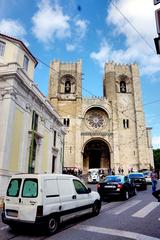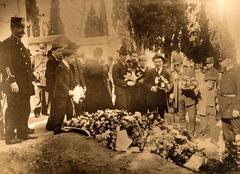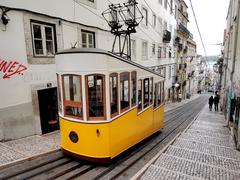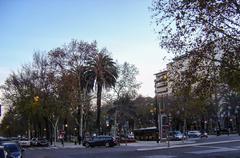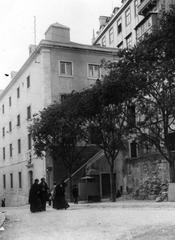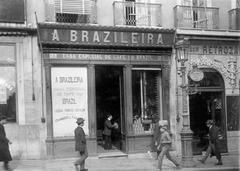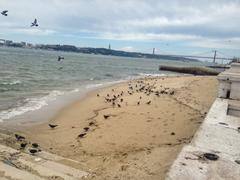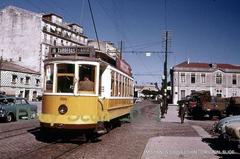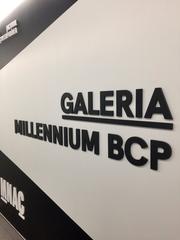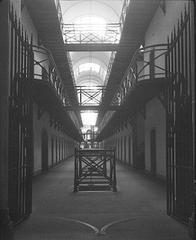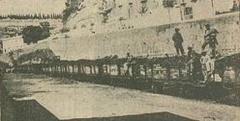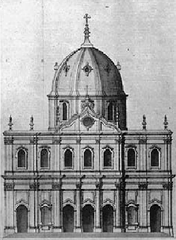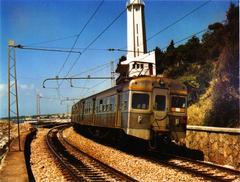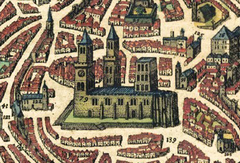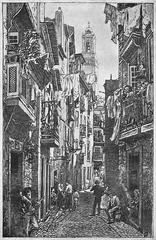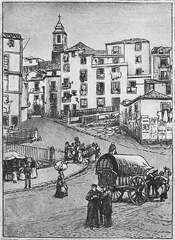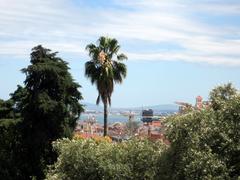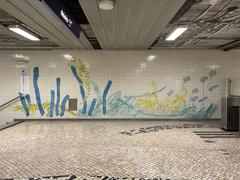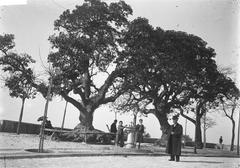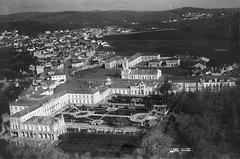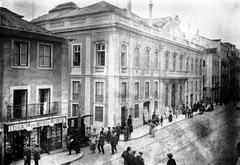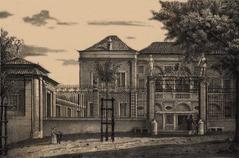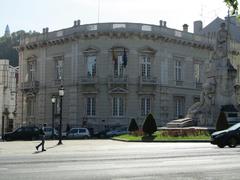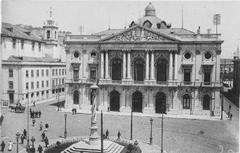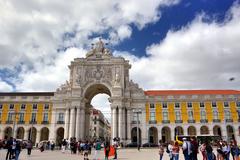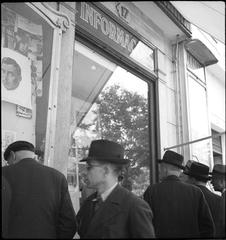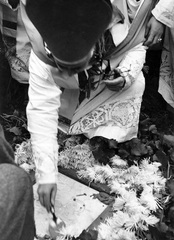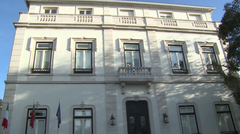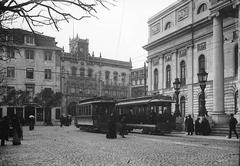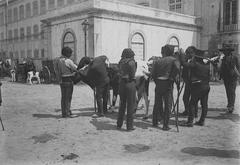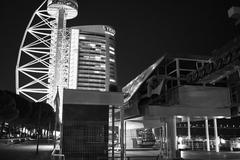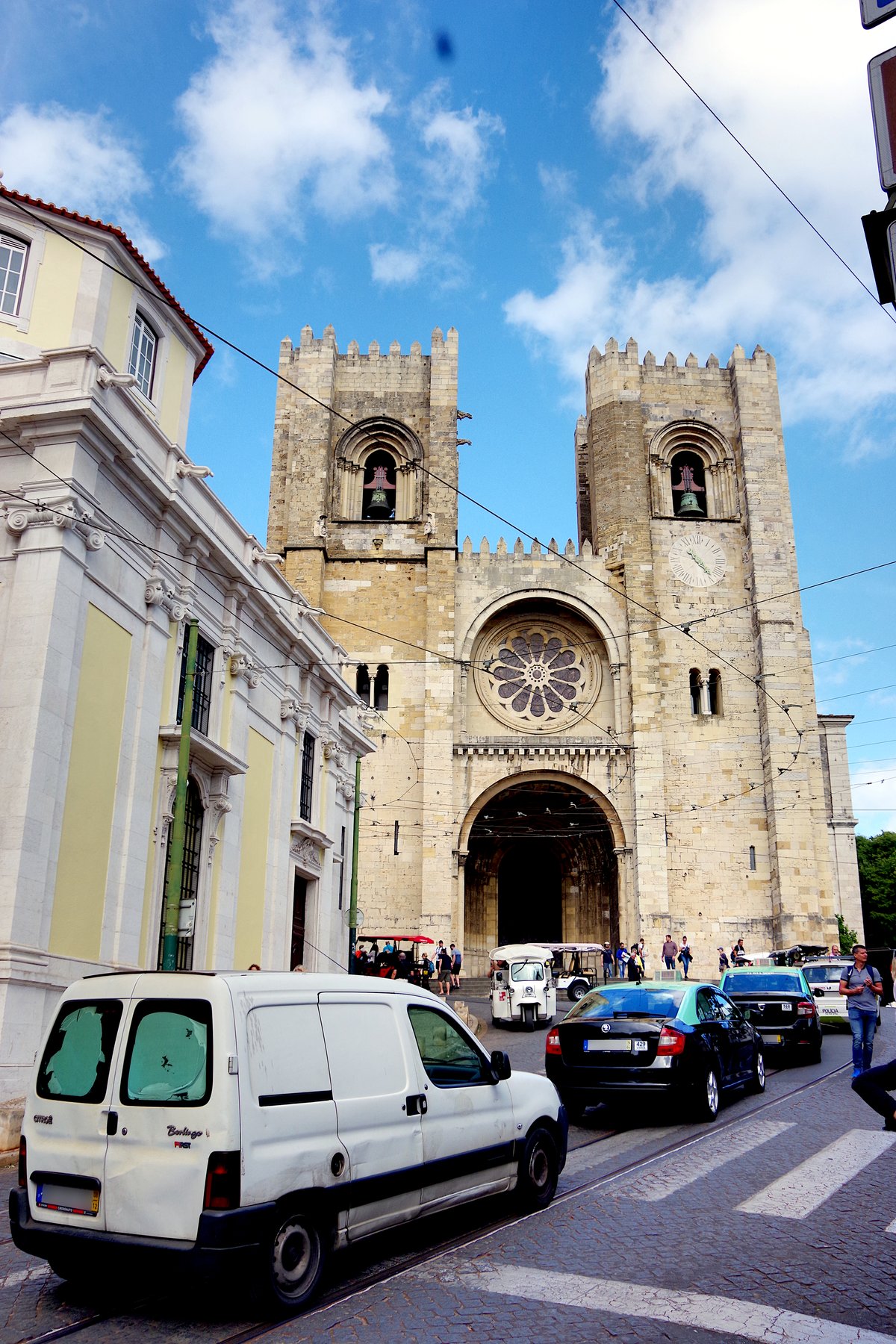
Visiting Sé Catedral de Lisboa: Hours, Tickets, and Tips
Date: 17/07/2024
Introduction
Sé Catedral de Lisboa, commonly known as Lisbon Cathedral, is a vital historical and architectural gem in Lisbon, Portugal. Constructed in 1147 after King Afonso I reclaimed Lisbon from the Moors, it stands as the city’s oldest church and a symbol of the Christian reconquest (Lisbon Cathedral History). Over the centuries, this cathedral has been a witness to Lisbon’s evolving architectural styles, from its Romanesque origins to Gothic, Manueline, and Baroque influences. Each period has left its mark, contributing to the cathedral’s unique and diverse aesthetic (Gothic Architecture, Manueline Style).
The cathedral has also survived significant adversities, including the devastating Great Lisbon Earthquake of 1755, which led to considerable damage and subsequent reconstruction efforts (1755 Lisbon Earthquake). Archaeological excavations have revealed remnants from the Roman, Visigothic, and Moorish periods, highlighting the site’s extensive historical relevance (Lisbon Cathedral Archaeology).
Today, Sé Catedral de Lisboa continues to serve as an active place of worship and a major tourist attraction. It plays a central role in Lisbon’s religious, cultural, and social life. Visitors are drawn to its rich history, architectural splendor, and the treasures housed within its walls, including the relics of Saint Vincent of Saragossa and the baptismal font of Saint Anthony of Padua (Saint Vincent of Saragossa, Saint Anthony of Padua).
Table of Contents
- [History of Sé Catedral de Lisboa](#history-of-sé-catedral-de-lisboahistory-of-sé-catedral-de-lisboa)
- [Origins and Construction](#origins-and-constructionorigins-and-construction)
- [Architectural Evolution](#architectural-evolutionarchitectural-evolution)
- [Earthquakes and Reconstructions](#earthquakes-and-reconstructionsearthquakes-and-reconstructions)
- [Archaeological Discoveries](#archaeological-discoveriesarchaeological-discoveries)
- [Religious and Cultural Significance](#religious-and-cultural-significancereligious-and-cultural-significance)
- [Modern-Day Restoration and Preservation](#modern-day-restoration-and-preservationmodern-day-restoration-and-preservation)
- [Visitor Information](#visitor-informationvisitor-information)
- [Tickets and Opening Hours](#tickets-and-opening-hourstickets-and-opening-hours)
- [Travel Tips](#travel-tipstravel-tips)
- [Nearby Attractions](#nearby-attractionsnearby-attractions)
- [Accessibility](#accessibilityaccessibility)
- [FAQ](#faqfaq)
- [Conclusion and Call to Action](#conclusion-and-call-to-actionconclusion-and-call-to-action)
History of Sé Catedral de Lisboa
Origins and Construction
Sé Catedral de Lisboa is the oldest church in the city and a significant historical landmark. Its construction began in 1147, shortly after the city was recaptured from the Moors by Afonso I, the first King of Portugal. The cathedral was built on the site of a former mosque, symbolizing the Christian reconquest of Lisbon. The initial architectural style was Romanesque, characterized by its robust and fortress-like appearance, which was typical of the period. The cathedral’s construction was part of a broader effort to establish Christian dominance in the region (Lisbon Cathedral History).
Architectural Evolution
Over the centuries, Sé Catedral de Lisboa has undergone numerous modifications and restorations, reflecting various architectural styles. The original Romanesque structure was expanded and modified in the Gothic style during the 13th and 14th centuries. Notable additions from this period include the cloister and the ambulatory. The cloister, in particular, is a fine example of Gothic architecture, featuring pointed arches and intricate stone carvings (Gothic Architecture).
In the 16th century, the cathedral was further embellished with elements of the Manueline style, a uniquely Portuguese architectural style that incorporates maritime motifs and lavish ornamentation. This period saw the addition of the ornate main portal and the rose window, which are among the cathedral’s most striking features (Manueline Style).
Earthquakes and Reconstructions
Lisbon has a history of devastating earthquakes, and Sé Catedral de Lisboa has not been spared. The most significant of these was the Great Lisbon Earthquake of 1755, which caused extensive damage to the cathedral. The earthquake, followed by a tsunami and fires, led to the collapse of the main nave and the destruction of many of the cathedral’s original features (1755 Lisbon Earthquake).
Reconstruction efforts in the aftermath of the earthquake aimed to restore the cathedral while preserving its historical integrity. The rebuilding process incorporated elements of the Baroque style, which was prevalent at the time. Despite these efforts, some of the original Romanesque and Gothic features were lost, and the cathedral’s appearance was significantly altered (Lisbon Cathedral Restoration).
Archaeological Discoveries
In the 20th century, archaeological excavations in and around Sé Catedral de Lisboa have unearthed significant historical artifacts, shedding light on the site’s long and varied history. Excavations in the cloister area revealed remnants of the Roman, Visigothic, and Moorish periods, indicating that the site has been a place of worship for various cultures over the millennia (Lisbon Cathedral Archaeology).
One of the most remarkable discoveries was a Roman road and a series of Roman and Moorish houses, which provide valuable insights into the urban development of Lisbon. These findings have been integrated into the cathedral’s museum, allowing visitors to explore the rich historical layers of the site (Roman Road Discovery).
Religious and Cultural Significance
Sé Catedral de Lisboa has played a central role in the religious and cultural life of Lisbon for nearly nine centuries. It has been the site of numerous significant events, including royal weddings, baptisms, and funerals. One of the most notable events was the baptism of Saint Anthony of Padua, one of the most revered saints in the Catholic Church, who was born in Lisbon in 1195 (Saint Anthony of Padua).
The cathedral also houses several important religious relics and artworks. Among these is the silver reliquary containing the remains of Saint Vincent of Saragossa, the patron saint of Lisbon. The relics were brought to the cathedral in the 12th century and have been venerated by generations of worshippers (Saint Vincent of Saragossa).
Modern-Day Restoration and Preservation
In recent years, efforts have been made to preserve and restore Sé Catedral de Lisboa, ensuring that it remains a vital part of Lisbon’s cultural heritage. These efforts have included structural reinforcements, cleaning and conservation of the stonework, and the restoration of the cathedral’s interior and artworks. Modern technology has also been employed to monitor the building’s condition and prevent further deterioration (Lisbon Cathedral Preservation).
The cathedral continues to function as an active place of worship, hosting regular services and special religious ceremonies. It also serves as a major tourist attraction, drawing visitors from around the world who come to admire its architectural beauty and historical significance. The integration of modern amenities, such as guided tours and informational displays, has enhanced the visitor experience, making it easier for people to appreciate the cathedral’s rich history and cultural importance (Lisbon Cathedral Tours).
Visitor Information
Tickets and Opening Hours
Sé Catedral de Lisboa is open to visitors throughout the week. The typical visiting hours are from 9:00 AM to 7:00 PM, but it is advisable to check the official website for any changes or special closure dates. Tickets can be purchased on-site, and guided tours are available for those who wish to explore the cathedral in more detail (Lisbon Cathedral Tickets).
Travel Tips
When planning your visit, consider arriving early to avoid the crowds, especially during peak tourist seasons. Comfortable footwear is recommended as the cathedral’s stone floors can be uneven. Photography is allowed, but be respectful of ongoing services and other visitors. It’s also a good idea to bring a light jacket, as the interior can be cool.
Nearby Attractions
The cathedral is located in the Alfama district, one of the oldest neighborhoods in Lisbon. Nearby attractions include the Castelo de São Jorge, a historic castle offering stunning views of the city, and the Museu do Fado, dedicated to the traditional Portuguese music genre. The picturesque streets of Alfama are also worth exploring for their charming atmosphere and local shops.
Accessibility
Sé Catedral de Lisboa aims to be accessible to all visitors. Ramps and elevators are available for those with mobility issues. However, some areas, such as the cloister, may have limited accessibility due to the historical nature of the site. It is recommended to contact the cathedral in advance to inquire about specific accessibility needs.
FAQ
- What are the visiting hours for Sé Catedral de Lisboa?
- The visiting hours are typically from 9:00 AM to 7:00 PM. Please check the official website for any updates.
- How much are tickets for Sé Catedral de Lisboa?
- Ticket prices vary, and guided tours are available. It is best to check the official website for the most current information.
- What are some nearby attractions to Sé Catedral de Lisboa?
- Nearby attractions include Castelo de São Jorge, Museu do Fado, and the charming streets of the Alfama district.
- Is Sé Catedral de Lisboa wheelchair accessible?
- Yes, the cathedral is wheelchair accessible, with ramps and elevators available for visitors with mobility issues.
Conclusion and Call to Action
Sé Catedral de Lisboa is more than just a historical monument; it is a living testament to Lisbon’s rich and varied past. From its Romanesque foundations to the Gothic cloisters and Baroque embellishments, the cathedral encapsulates centuries of architectural evolution and cultural significance (Lonely Planet). It has withstood natural disasters, political upheavals, and social changes, emerging each time as a symbol of resilience and continuity.
Today, the cathedral remains a focal point for both the local community and tourists. It offers an immersive experience into Lisbon’s history, from its religious ceremonies and royal events to the archaeological discoveries that reveal its ancient roots (Visit Lisboa). Efforts to preserve and restore this iconic landmark ensure that future generations can continue to appreciate its beauty and significance.
A visit to Sé Catedral de Lisboa is not just a journey through time but also an opportunity to connect with the enduring spirit of Lisbon. Whether you are drawn by its historical, architectural, or cultural allure, the cathedral promises a memorable and enriching experience. For those planning to explore Lisbon, this guide provides all the necessary information to make the most of your visit, from practical travel tips to insights into nearby attractions (Portugal Visitor).
For more updates and information on Lisbon’s historical sites, download the Audiala app, check out our other related posts, or follow us on social media.
References
- Lisbon Cathedral History. Lisbon.net. Retrieved from https://www.lisbon.net/lisbon-cathedral
- Gothic Architecture. Britannica. Retrieved from https://www.britannica.com/art/Gothic-architecture
- Manueline Style. Britannica. Retrieved from https://www.britannica.com/art/Manueline-style
- 1755 Lisbon Earthquake. History.com. Retrieved from https://www.history.com/topics/natural-disasters-and-environment/1755-lisbon-earthquake
- Lisbon Cathedral Archaeology. Lisbon.net. Retrieved from https://www.lisbon.net/lisbon-cathedral
- Saint Vincent of Saragossa. Britannica. Retrieved from https://www.britannica.com/biography/Saint-Vincent-of-Saragossa
- Saint Anthony of Padua. Britannica. Retrieved from https://www.britannica.com/biography/Saint-Anthony-of-Padua
- Visit Lisboa. Retrieved from https://www.visitlisboa.com
- Lonely Planet. Retrieved from https://www.lonelyplanet.com
- Portugal Visitor. Retrieved from https://www.portugalvisitor.com
